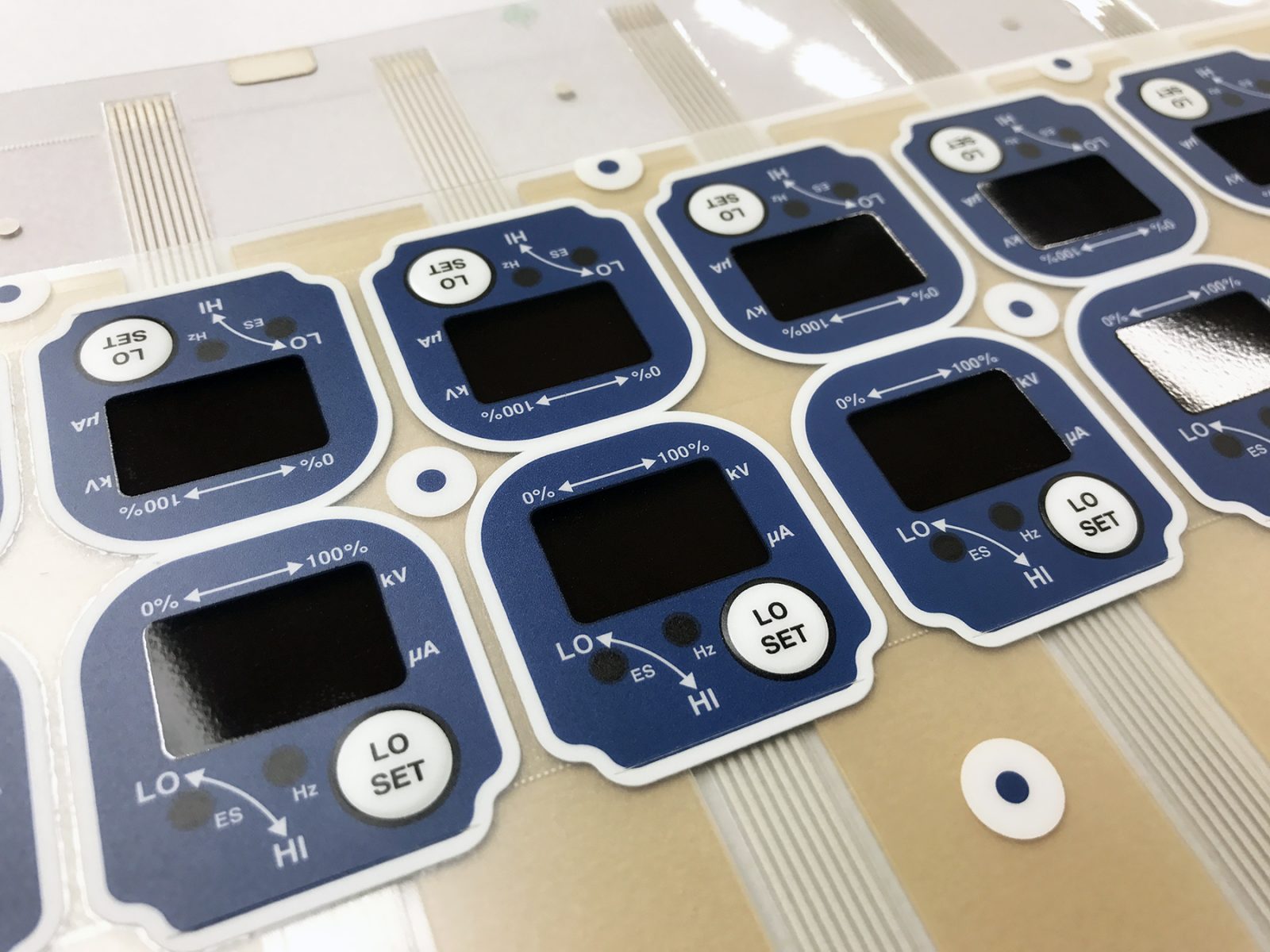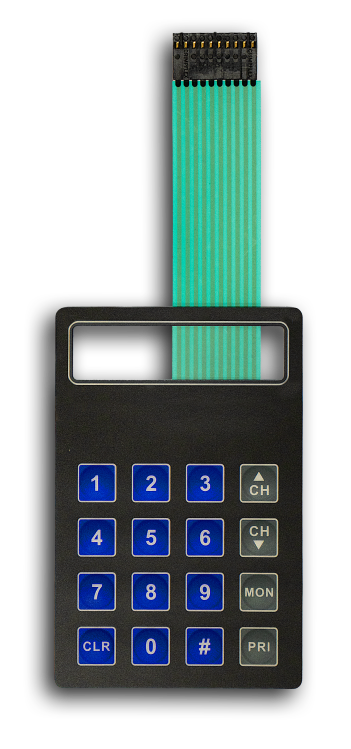Membrane Switches vs. Traditional Switches: What You Need to Know
Membrane Switches vs. Traditional Switches: What You Need to Know
Blog Article
Discover How Membrane Switches Feature and Their Function in Modern Electronics
Membrane Switches represent an innovative combination of modern technology and design within the realm of contemporary electronics, serving as essential interfaces in numerous devices. Understanding the intricacies of Membrane button capability and their more comprehensive implications in boosting user experience invites additional expedition into their style, benefits, and the cutting-edge growths forming their future in technology.
What Are Membrane Switches?

Membrane buttons are identified by their toughness and resistance to environmental factors, such as dust, wetness, and severe temperature levels. They can be personalized with various graphics, shades, and responsive comments options, boosting customer experience while preserving aesthetic appeal - membrane switches. The unification of printed circuits enables for seamless integration right into devices, improving general functionality.
The versatility of Membrane switches is noticeable in their capacity to support both simple and complex control features. They can incorporate functions such as LED indicators and touch-sensitive technology, catering to certain customer requirements. As innovation continues to evolve, Membrane Switches stay crucial for allowing user-friendly and efficient interface, consequently playing a pivotal role in the development of modern-day digital devices.
Parts of Membrane Buttons
Membrane switches are made up of a number of crucial parts that interact to create a trusted and practical interface. The main elements consist of the visuals overlay, sticky layer, spacer layer, and conductive traces.
The visuals overlay serves as the user interface, typically published on a versatile substrate such as polyester or polycarbonate. This layer not only gives aesthetic charm but additionally includes responsive responses, visual signs, and safety functions. Under the graphic overlay lies the adhesive layer, which protects the switch to the gadget and ensures longevity against ecological anxieties.
The spacer layer is crucial for preserving the required space between the visuals overlay and the circuit layer. When pressure is applied, this space permits for the activation of the button. The conductive traces, normally made from silver or carbon, develop the electrical paths that complete the circuit when the button is engaged.
Furthermore, a support layer may be consisted of for architectural support and insulation. These elements team up perfectly, guaranteeing that Membrane buttons are both resistant and user-friendly, making them indispensable in different modern digital applications.
Exactly How Membrane Switches Work
Exactly how do Membrane Switches function effectively within digital tools? Membrane Switches run on the principles of pressure-sensitive technology, utilizing a split building that consists of visuals overlays, sticky layers, and conductive aspects.
The design of Membrane switches is crucial for their effective procedure (membrane switches). The layers are thoroughly engineered to supply tactile feedback, toughness, and resistance to ecological variables straight from the source such as dampness and dirt. The inclusion of domes-- little, elevated locations within the switch-- enhances responsive response, offering users with a noticeable click feeling upon activation
Furthermore, Membrane switches can be personalized in terms of dimension, form, and graphics, making them suitable for different applications. They are commonly used in control panels, clinical devices, and consumer electronic devices due to their smooth design and reliability. On the whole, the reliable functioning of Membrane buttons is crucial in improving user interaction and making sure seamless procedure in modern-day digital devices.

Applications in Modern Devices
Utilizing their special design and capability, Membrane buttons have ended up being integral components in a variety of modern electronic devices. These functional interfaces are have a peek here employed in customer electronic devices, industrial devices, clinical tools, and auto controls, supplying smooth individual communication.
In customer electronics, Membrane buttons are frequently his comment is here discovered in devices like microwaves, washing equipments, and other home tools, where they allow user-friendly control with a streamlined profile. Their low-profile design helps with integration into small tools, improving visual appeal without endangering performance.
In industrial applications, Membrane Switches function as control panels for machinery, providing durability and resistance to rough settings. Their ability to withstand wetness and impurities makes them perfect for use in manufacturing and handling sectors.
Clinical gadgets also benefit from Membrane switches, which are developed to be easy to clean and preserve, making certain hygiene in medical settings. They are frequently used in analysis devices, individual surveillance systems, and portable medical devices, where reliability is paramount.
Advantages of Membrane Switches
One of the essential advantages of Membrane buttons is their adaptability, which enables them to be tailored for a selection of applications across several markets. These buttons can be made in various sizes and shapes, suiting distinct item requirements while giving seamless integration into devices. Their thin account allows a sleek and portable layout, frequently improving the aesthetic appeal of digital products.
An additional considerable benefit is their durability - membrane switches. Membrane buttons are commonly resistant to dust, dampness, and chemicals, making them excellent for extreme settings. This resilience extends their life expectancy contrasted to traditional mechanical switches, minimizing the need for frequent replacements
Furthermore, Membrane Switches offer cost-effectiveness. The manufacturing process includes printing modern technologies that minimize manufacturing prices, especially for huge runs. This cost, combined with reduced upkeep demands, makes them an eye-catching choice for suppliers.

Conclusion
In final thought, Membrane Switches represent a significant innovation in individual interface technology within modern-day electronic devices. As the need for resilient and instinctive interfaces proceeds to grow, the duty of Membrane buttons in forming user experience will undoubtedly increase.
Membrane Switches represent an innovative integration of modern technology and style within the world of contemporary electronic devices, serving as essential user interfaces in various tools.In the realm of modern-day electronic devices, Membrane Switches serve as essential elements that facilitate individual interaction with devices. As technology proceeds to progress, Membrane Switches stay crucial for enabling efficient and instinctive user interfaces, consequently playing a crucial function in the development of modern electronic devices.
Just how do Membrane Switches function successfully within electronic devices? On the whole, the reliable functioning of Membrane buttons is essential in boosting user communication and making sure smooth operation in modern digital gadgets.
Report this page